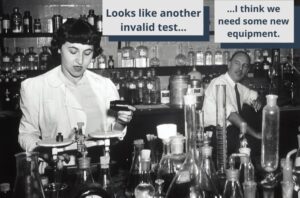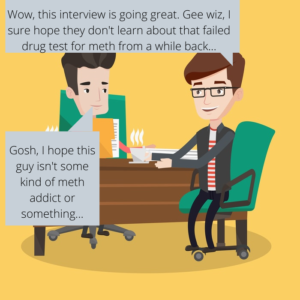What Happens When You Fail a DOT Drug or Alcohol Test?
You are removed from safety-sensitive functions, and you must complete the DOT return-to-duty process before you are eligible to return.
And What is the DOT Return-To-Duty Process, Exactly?
The DOT return-to-duty process is a series of steps that a safety-sensitive employee must take after failing a drug test.
It is made up of five steps: initial substance abuse professional (SAP) evaluation, treatment and education, follow-up SAP evaluation, return-to-duty testing, and follow-up testing/ongoing treatment.
Once an employee completes all steps up to follow-up testing/ongoing treatment, she is eligible to return to safety-sensitive functions.
And if the employee intends to return to safety-sensitive functions, whether with the same employer or not, she must complete the DOT return-to-duty process.
This process tends to be difficult and costly, and it is made this way intentionally to deter. Only the individuals who are serious about addressing any issues and returning to safety-sensitive functions should endure.
How Many Employees Had to Complete the DOT Return-to-Duty Process? (2018)
In 2018, there were more than 2.4 million DOT drug tests conducted. Of those 2.4+ million tests, 2.7% of them came back positive. That means that around 64,800 safety-sensitive employees failed a DOT drug test in 2018.
And whenever a safety-sensitive employee fails a DOT drug test, they must complete the DOT return-to-duty process.
However, less than 64,800 safety-sensitive employees had to go through this DOT return-to-duty process if we factor in a few points:
- There may be some safety-sensitive employees who failed multiple drug tests in 2018. (For example, maybe one employee failed both a reasonable suspicion and a return-to-duty drug test.)
- There are some instances, such as in the FAA with on-duty use and second failed drug tests, where safety-sensitive employees are permanently disqualified. Of course, these employees do not have any need to complete the DOT return-to-duty process
- Some individuals who fail a DOT drug or alcohol test will not attempt to do the DOT return-to-duty process
Factoring in those three points, less than 64,800 safety-sensitive workers had to complete the DOT return-to-duty process. But the number is still in the tens of thousands.
That 64,800 gives us a good estimate for the number of employees required to carry out the DOT return-to-duty process in 2018.
What Are the Steps in the DOT Return-to-Duty Process
As mentioned, the return-to-duty process includes five steps. They are:
- Initial SAP evaluation
- Treatment/education
- Follow-up evaluation
- Return-to-duty test
- Follow-up testing
Prior to the individual beginning these steps, though, the employer must provide the employee with a listing of acceptable SAPs that includes names, addresses, and phone numbers.
Employers have the option to compile this list themselves or get one from a C/TPA or service agent.
The individual then will use this listing to begin the DOT return-to-duty process.
Step 1: Initial SAP Evaluation
In the first step, a substance abuse professional, or SAP, evaluates the individual (not “employee” anymore, since the employer may or may not have fired them). From this evaluation, the SAP determines appropriate treatment and education for the individual and creates a plan. Then, the SAP refers the individual to the providers of the services laid out in the plan.
Who is the SAP?
SAPs are licensed physicians, social workers, psychologists, employee assistance professionals, therapists, or drug and alcohol counselors. Also, they have specific training for the SAP roles and responsibilities.
And they must have specific knowledge on treating and diagnosing drug and alcohol-related disorders.
Given they meet these requirements, they must then pass a test and receive certification as an SAP.
As mentioned, they are responsible for evaluating the individual after a failed drug test and creating a written plan that the employee must follow.
After making this plan, they refer the individual for the determined treatment and education.
What is the SAP’s Role?
The SAP is on neither the company nor the individual’s side. Rather, the SAP’s role is to protect public safety by providing an evaluation of the individual’s substance use and an appropriate treatment and education plan.
Then they ensure that the individual completed the plan they laid out before the individual resumes safety-sensitive functions. Once the individual completes the SAP-dictated treatment and education, they are eligible to return to safety-sensitive functions.
However, completing the DOT return-to-duty process does not mean that the employer has to allow the individual to return to work for them. That is up to the individual employer. In fact, the employer does not even have to pay for SAP services. This is why the DOT return-to-duty process can be costly for individuals. SAP evaluation, treatment, and education are all services that someone has to pay for, and that someone often ends up being the individual.
Step 2: Treatment/Education
In step 2, the individual must follow the treatment and education plan created for them by the SAP.
Treatment may include inpatient, outpatient, and aftercare services.
Education may include self-help groups, drug and alcohol education courses (like the ones we provide), or community lectures.
If you are in need of drug and alcohol education for safety-sensitive employees, click the link. It will take you to our employee education program specifically designed for that purpose.
If the individual hopes to return to safety-sensitive work, though, she must carry out the course of action just as the SAP prescribed.
Step 3: Follow-Up SAP Evaluation
The amount of time between initial and follow-up evaluations depends on the treatment and education plan prescribed to the individual by the SAP. There is no specific time frame laid out in the regulations.
In the follow-up evaluation, the SAP confirms that the individual completed the steps prescribed by them and has complied.
The SAP then can report to the DER that the employee complied with the DOT return-to-duty process. And the DER can use this report as grounds for re-instating the individual.
Then, the SAP determines a follow-up testing schedule as well as a continued treatment plan, if deemed necessary.
If continued treatment is recommended by the SAP, employers have the right to require the individual to complete the treatment recommendations.
Step 4: Return-to-Duty Testing
In step 4, the individual must take a DOT return-to-duty test for drugs and/or alcohol. The SAP determines whether the individual must take a test for drugs, alcohol, or both. They base this decision on their evaluations with the individual.
To return to safety-sensitive functions, the individual must receive a negative drug test result and/or an alcohol test result of less than 0.02.
However, even if the individual passes the return-to-duty testing process, the employer does not have to return her to work. That is a personnel decision left to the employer.
Also, the positivity rate on return-to-duty tests has risen over the last several years. In 2014, the positivity rate for return-to-duty testing was 2.9%. In 2018, it was 5.5%.
The rise in positivity rate coincides with the addition of several drugs to the DOT drug testing panel. In 2018, DOT drug tests started also testing for oxycodone, hydrocodone, oxymorphone, and hydromorphone.
It is likely that these additions to the DOT drug test are a major factor in the return-to-duty testing positivity increase. Increases in positivity rate can be seen in all DOT drug testing categories.
At the same time, there has been a slight increase in positivity rates over the few years prior to the addition of the aforementioned drugs. Growing drug use overall may also be a small factor.
But it is unlikely that the work of SAP’s is deteriorating to the point where more individuals are making their way through the return-to-duty process before actually being fully recuperated.
Step 5: Follow-Up Testing/Continued Treatment
After passing a return-to-duty test, the individual may return to safety-sensitive functions, thus returning to “employee” status.
As mentioned, the SAP creates a follow-up testing plan for the employee to follow. This plan must include at least six follow-up tests in the first twelve months of the employee returning to safety-sensitive functions.
The SAP can require both drug and alcohol follow-up tests regardless of what the initial drug test failure was for. For example, if the employee failed a drug test, but the SAP determines that the employee also has an alcohol-related problem, they can require both alcohol and drug testing.
Also, the six follow-up tests in the first twelve months is a minimum. The SAP can require more tests in the first year, and they can require more testing be done in the four years after the first. So, follow-up testing can go on for up to five years in total. That’s a good deal of time!
The employer is responsible for making sure that the employee follows this plan. However, the employer cannot impose additional testing on the employee beyond the SAP’s plan.
Also, all follow-up tests should be unannounced and without any discernible pattern. The employee should have no advance notice of each test. If the employee fails any follow-up test, the employer must remove them from safety-sensitive work. The employee must start the return-to-duty process over again.
Along with follow-up testing, the employee should continue to follow the SAP’s continued treatment plan if it was included.
And one more point: other tests can not substitute as follow-up tests. For example, if an employee is selected for a random test, it cannot at the same time count as a follow-up test.
The follow-up testing plan is apart from the regularly scheduled programming (i.e. your company’s DOT drug and alcohol testing program).
DOT Return-to-Duty Process Overview Conclusion
To read the full regulations behind the DOT return-to-duty process, you can go to 49 CFR Part 40 Subpart O. This subpart covers the SAP requirements, steps, and employer requirements in the return-to-duty process.
This process can be a headache for both employer and employee. It is lengthy, difficult, and costly. The best advice is to avoid it altogether by not failing a test in the first place. Easier for some than others I suppose, though.
Have any of you ever had to go through the DOT return-to-duty process before? Or have you had an employee go through it? We’d like to hear your experiences with the process. You can let us know by commenting below.
Sources
Quest Diagnostics Drug Testing Index. (2019, April 11). Retrieved August 12, 2019, from https://www.questdiagnostics.com/home/physicians/health-trends/drug-testing






